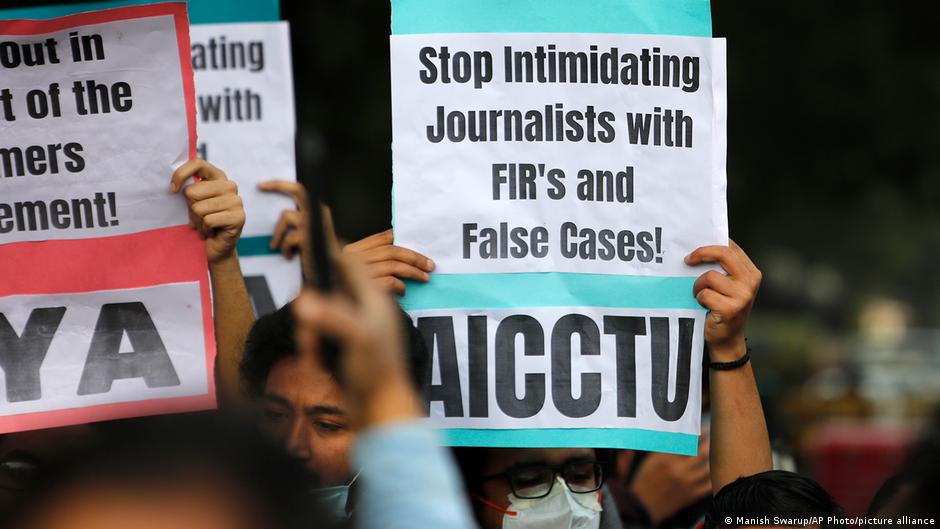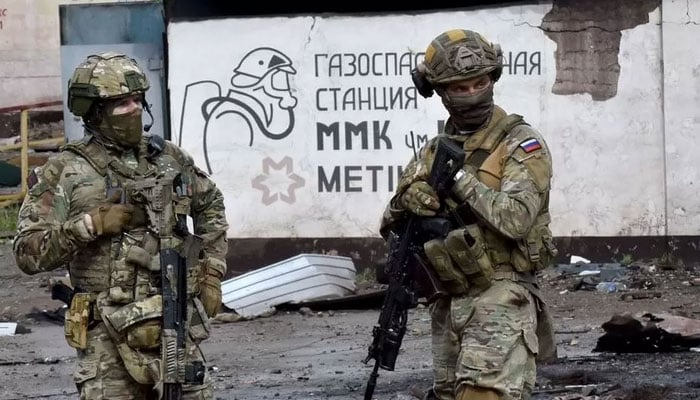
Contributed by LIPR Ambassador of Peace Hiba Shaikh Ansari based in India
Introduction
Alex de Tocqueville was probably the first great political theorist to examine what was then a fresh and rising phenomenon- the emergence of the press as a powerful instrument of democracy. Media control of democracy is an old and well-known idea. The media promotes self-government by exposing people to a variety of viewpoints, enhancing citizens’ capacity to exercise citizenship and judgment, and examining authority.
In India, the government is bringing severe lawsuits against publications that criticize its policies, while its supporters threaten outlets and individual journalists. India’s attack on journalistic freedom remains unabated amid the pandemic. The country is witnessing an increasing worldwide assault on freedom of speech at a time when information is crucial, and journalists are risking their lives on the front lines to publish critical news.
Historical Background
The Indian national press was unquestionably the backbone of the liberation movement against colonial rule. The knowledge and production of public opinion are tied to its historical significance and status in society.
Only after the arrival of European Civilization in India did the modern press begin. The first Europeans to introduce printing presses to India were the Portuguese. Over the last 250 years, the press has unquestionably established itself as the fourth and most powerful pillar of contemporary India.
The last years of the 19th century saw a golden chapter in Indian journalism, with publications continuously reporting on the nation’s issues. Instead of reporting on British and feudal Indian societal events, newspapers began to focus on news and write-ups on a variety of social and political concerns and problems, and the country witnessed the birth of a new kind of journalism, one dedicated to social reforms and public welfare, as well as shaping public opinion on issues such as education, child marriage, widow re-marriage, and sati.
Under the leadership of towering figures such as Tilak, Gokhale, Gandhi, and others who stood for progressive journalism and liberal notions and believed in the power of the press to shape public opinion, shape the nation’s destiny, and safeguard the rights and civil liberties of its citizens, the press gradually became the most powerful weapon for the freedom movement. In the years leading up to independence, national political struggle and advocacy for social reforms and liberation led to the development of the press’s core strength in free India. This comprised autonomous functioning, opposition to governmental coercion and censorship, a solid dedication to free speech and expression, and its role as the society’s leader and pathfinder, as well as a defender of basic rights. In the sixty years since independence, India’s democracy has gone from strength to strength, implementing a wide variety of changes in the face of conflicts, wars, and insurgencies.
Current Scenario
Amid a cross country lockdown since March 24,2020, to control the spread of Covid, journalists across India were being charged with sedition and brought to police headquarters for giving an account of the government’s handling of the pandemic. In India, there is a growing concern of persecution for journalists and other alternative voices. Under Prime Minister Narendra Modi, India’s ranking in Reporters Without Borders’ press freedom rating has declined from 136th in 2015 to 142nd in 2021. As per the RSF, the Bhartiya Janata Party (BJP) government is progressively encroaching on the rights of the media with British colonial-era “sedition” laws and undermining tension and violence against journalists who don’t “toe the Hindu nationalist government’s line.”
Dhaval Patel, the editor of the Gujarati news outlet, Face of Nation, was arrested and charged with sedition charges on May 11, 2020, after writing about the BJP’s decision to alter Gujarat’s political leadership in the wake of the state’s high surge in coronavirus cases. Similarly, the South Asia Media Defenders Network (SAMDEN) reports that on May 18, the Uttar Pradesh government filed an FIR against Ravindra Saxena from Today-24 for reporting on mismanagement and carelessness at a quarantine center in Sitapur district. At least six journalists have been charged in Himachal Pradesh with 10 FIRs for reporting on India’s migrant issue and the lack of food delivery in the area. The migrant crisis is threatening to become as serious as the emergency of the pandemic. The oppression of journalists is not limited to one ideological group; comparable tactics are undertaken across partisan borders. According to NewsLaundry, the Maharashtra police have arrested Rahul Zori, a TV9 Marathi journalist, for uncovering irregularities in migrant relief camps in Dhule, Maharashtra.
In India, journalism is still a risky pursuit. According to the Committee to Protect Journalists’ 2019 Global Impunity Index, India ranks 13th among countries where journalists are murdered, and their assassins walk free. For the past 12 years, it has been on the index.
Condition of Female Journalists
While reporting on the issue, women are frequently targeted for threats. According to a report by Geeta Seshu for the Free Speech Collective, 67 journalists were jailed and over 200 were physically assaulted in 2020. For the last five months, a journalist who was on his way to document a gang rape of a girl in Uttar Pradesh, has been detained.
Journalists, particularly women who are critical of the administration, are subjected to online harassment and threats. Neha Dixit, a freelance writer living in Delhi, claims she has been “stalked, publicly threatened with rape and death, viciously mocked,” and her residence has been broken into. A law student was detained this week for reportedly making murder and rape threats to another freelance journalist, Rohini Singh. From January to April 2020, the Coalition of Women in Journalism recorded 145 threats and harassment against female journalists around the world. India has the third-highest rate of female journalist intimidation.
Internet Ban in Jammu-Kashmir
The International Press Institute has labeled Kashmir as one of the “world’s most oppressive places for the press.” India’s ranking in Reporters Without Borders’ press freedom rating has declined from 136th in 2015 to 142nd in 2021.
The PIB Additional Director General initially wrote to Chairman of the RSF Pierre Haski on April 26 last year, requesting parameters for the survey on which they calculate the index, to have a better knowledge of the ranking. RSF delegates, on the other hand, questioned the extended Internet restriction in Jammu and Kashmir, which began on August 5, 2019, and lasted over a year. Peerzada Ashiq, a senior reporter for The Hindu, Masrat Zahra, a freelance photojournalist, and Gowhar Geelani, a freelance writer, novelist, and former editor for Deutsche Welle, were charged within 48 hours for their coverage on Kashmir in April 2020. The Editors Guild of India condemned these measures as a “gross abuse of authority,” with the FIR s’ sole objective being to “instill fear in journalists.” The arrest of Qazi Shibli, the editor of the Kashmiriyat news website, on July 31, 2020, was one of the most instructive examples of this circumstance. He was kept in a Srinagar prison, according to the police, although there is no cause for his detention. He was released in April after being jailed for nine months based on a single tweet.
Considering these harrowing tales, RSF demanded the Indian government to alter course quickly, lest it is remembered as the dictatorship that denied the region’s 8 million residents credible news and information during the height of a pandemic.
Government’s response to the issue
In response to the country’s falling press freedom index, the Indian government has formed a new Index Monitoring Cell. On World Press Freedom Day, Information and Broadcasting Minister Prakash Javadekar tweeted that India’s media “enjoy absolute freedom” and that “we will expose, sooner rather than later, such studies that tend to present a poor picture about ‘Freedom of Press’ in India.” The BJP-led government has petitioned the Supreme Court to prevent the release of any COVID-19 data that has not been cleared by them. Although the petition was dismissed, the media was instructed to “refer to and report the official account of the developments.” Critics claim that several journalists considered as pro-government have gotten away with airing and publishing provocative content, frequently directed at minorities, regularly. In another Supreme Court hearing, it was declared that “free citizens cannot exist when the news media is shackled to conform to one perspective,” and all but one FIR against Republic TV editor-in-chief Arnab Goswami were overturned. In April, Goswami was charged with criminal defamation and Section 153A of the Indian Penal Code, which makes fostering enmity between different groups based on religion, race, place of birth, domicile, or language punishable by three years in prison. The allegations originated from his reporting on the lynching of Hindu sadhus in Palghar.
Journalists are more split than ever before in today’s polarized society. PM Modi’s government is perceived as uncritical by much of the mainstream media, including several political news networks. According to a Freedom House study, “India, the world’s most populous democracy, is also sending signals that holding the government responsible is not part of the press’s role.”
Conclusion
Journalism carries enormous promise for both seasoned and aspiring journalists. However, risks and temptations are lurking behind every promise, which must be resisted at all costs if the profession’s core ideals are to be preserved. Otherwise, journalism and its practitioners would be subjected to a never-ending barrage of criticism. In India, journalists are vulnerable to a variety of attacks, including police assault against reporters, ambushes by political activists, and retaliation by criminal organizations or corrupt local politicians. Prime Minister Narendra Modi stated a month after taking office in the summer of 2014 that, India’s “democracy would not survive if we cannot ensure freedom of speech and expression.” Several reports show that India’s democracy has degenerated in the last seven years. It’s a damning indictment of a country that often boasted about its dynamic and competitive media.


